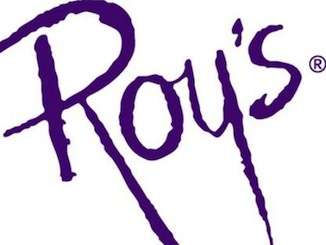
“The brand is a small part of our portfolio,” CEO Elizabeth Smith said during a call Tuesday discussing third-quarter earnings. “It’s not a priority for investment. Roy’s deserves to be in a situation where it can get the time, attention and resources it needs to grow. We’re confident that it can thrive under new ownership.”
Bloomin’ Brands’ decision to sell Roy’s comes amid mounting pressure on restaurant companies to spin off assets, such as additional restaurant brands, food companies or real estate.
Roy’s, founded in Hawaii in 1988 by James Beard Award winner Roy Yamaguchi, was easily the smallest of the concepts in Bloomin’s portfolio. The company has long talked about its “Core Four” brands, leaving Roy’s out of the loop.
“Roy’s is not too much of a surprise that it would do better outside the portfolio,” Smith said.
Smith defended the company’s decision to keep its other four concepts. While she said each of its brands must “earn the right” to remain with the company, she said each of them has outperformed other casual-dining restaurants in recent years. That includes Carrabba’s up until this year. Smith said one bad year should not force a decision to sell a chain.
“Every single one of our brands has outperformed the category year after year, quarter after quarter,” Smith said.
During the quarter ended Sept. 28, Bloomin’ Brands also decided to close 36 underperforming international restaurants, mostly in South Korea, and laid off a “significant number” of employees in a headquarters restructuring.
All but two of the 36 international restaurants Bloomin’ Brands plans to close are Outback Steakhouse locations in South Korea, where sales have been weak. The company analyzed the market in that country and decided it would be better off with a “smaller fleet of stronger restaurants.”
Meanwhile, the company reorganized its supply chain and development teams at its headquarters. As part of the realignment, the company eliminated a “significant number of positions,” though how many was uncertain. A search of layoff notices in Florida – required for any layoff of 50 or more people – failed to turn up any mention of Bloomin’ Brands.
Eliminating the positions cost the company $5.4 million in severance and other charges. But the company said the reorganization would enable it to increase spending in other areas, like digital marketing, without increasing overall general and administrative costs.
In addition to the Roy’s sale, layoffs and unit closures, Bloomin’ Brands decided to sell its two corporate aircrafts. Impairment charges related to all of those events led to a $11.4 million loss in the quarter, versus $11.3 million in net income during the previous quarter.
Most of the company’s remaining four brands reported strong same-store sales improvement during the third quarter. Combined domestic same-store sales rose 3.3 percent, Bloomin’s best quarter for same-store sales since 2012, Smith said. It was also 290 basis points higher than the Knapp Track casual-dining same-store sales index.
Bloomin’s sales performance and its various announcements drove its stock nearly 10-percent higher in early trading Tuesday.
Three of the four brands outperformed the overall casual-dining sector during the quarter, led by Outback Steakhouse, where same-store sales rose 4.8 percent and traffic increased 0.4 percent, meaning that customers paid higher prices or bought more expensive items.
Same-store sales at Fleming’s Prime Steakhouse and Wine Bar also rose 4.8 percent, while Bonefish Grill’s comps increased 2.6 percent.
Smith attributed the improvement at the brands in part to improvement in its dinner business. Dinner sales at the company’s restaurants were below expectations in the second quarter, she said, and Bloomin’ made changes to boost evening meal occasions. At Outback, for instance, the company made efforts to “reclaim its steak authority” with a combination of advertising and limited-time offers.
The exception among Bloomin’s concepts was Carrabba’s, where same-store sales fell 1.2 percent. “It’s been a tough year,” Smith said. She acknowledged that the company needed to make its menus lighter, but with more variety. And she said that, after three years of outperforming the casual-dining industry, “our success has made us too cautious.”
Despite the improvement at its brands, Bloomin’ executives were cautious heading into the end of the year, though they increased their full-year sales expectations to 1 percent to 1.5 percent from flat to 1 percent.
“We feel it’s prudent to be cautious,” Smith said. “There have been false positives in the casual-dining industry in the past.”
Same-store sales, coupled with the company’s performance in international markets like Brazil, drove revenue 10.1 percent higher. Adjusted net income was $12.6 million, decreasing 4.5 percent from $13.2 million the previous year.